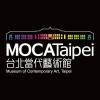烏鬼 Stories We Tell To Scare Ourselves With
策展人|黃漢沖
展覽簡介
「烏鬼,番國名,紅毛奴也。其人遍體純黑,入水不沉,走海面若如平地。」
―《臺灣志略》(1738)
恐懼具有驅動性,它驅動著人類最根本的直覺,誘發腎上腺素的產生,也使人類因防衛和安全的需求,劃分出領地邊界的內外範圍。人們在面對未知與潛在危機時,常將內心的恐懼與不安幻化成各種魑魅魍魎的傳說,區隔出人域與鬼域的模糊地理。鬼魅也常用於指稱外來者、蠻夷等非我族類,如「烏鬼」被指稱為16、17世紀跟隨歐洲殖民者來臺的東南亞奴工、鄭氏王朝的印尼班達島奴兵、被荷軍滅族的小琉球原住民、非洲黑奴等。從這個角度切入,鬼魅可說是不斷出没在東南亞的口傳故事、藝術和影像脈絡之中,因為它幫助我們形成對「自我」的認知,它化身為外來者的身影與侵略性的物種等,隨著不同的目的與心理機制,在無數人口中不斷變異,幻化成形。
「極端政治理念的闇影」不再只是徘徊於政治場域的邊緣,它已成為其中心議題。這類鬼影幢幢的東西,猶如在某個遙遠的過去之邊緣、在當下事件的之外,向我們頻頻招手,而這些鬼魅所揭示的正是我們日常生活行為及習慣中,潛在而延續的帝國邏輯及傾向,殖民仍在發生,它並不只是歷史。同時,也因為我們此刻的存在,尚未脫離殖民的遺緒,我們之所以能夠理所當然地活在現代,正是因為我們自認已將過去抛諸腦後。「烏鬼」這個展覽之中的魑魅魍魎,除了無腳鬼、食人虎、偽神祇,也包含了時代的他者,如外來者、移民、異教徒、酷兒、甚至是不可見與失能的被統治者。
我們活在這個生人世界,不僅僅被過往的魅影糾纒著,它同時也是個更為蠻荒的場域,充斥著前殖民時期古老的鬼魅和仍然埋藏在當下的未來幽魂,在這樣的時刻,人和非人之間的區別—包含那些自然的、獸類的、技術的—都混合成一道衍生性的綜合光譜。然而,我們對非人的恐懼會自我調節,並且因理性知識而緩和,抑或演變成更嚴重的恐慌?究竟是誰指出了這些闇影?未來的鬼魅故事為何?而「我們」又將成為什麼?
Exhibition Introduction
Curator|Jason Wee
Exhibition Introduction
“Wugui (literally dark ghosts). Name of the indigenous country and slaves of the Dutch. This race has extremely black skin. They do not sink in water and can walk on the water surface as if were on land.” _ An Official Brief History of Taiwan, (1738)
Fear drives our basest instincts. Fear is generative; it produces Epinephrine, shapes the borders that settle our tribal demands for security and safety, and the demarcation of what lies within one territory or region and what lies outside it. In the face of the strange and unknown, fear enters our stories as ghosts and ghouls separating the human from the animal, the human from the nonhuman. In the Chinese languages, the word “ghost” often signifies the foreigner or the uncivilized race; “Wu Gui” for instance, refers collectively to the slaves brought by 17th-century European colonizers to Taiwan from Africa and Southeast Asia, including those slave soldiers from the Indonesian Banda Islands who served Koxinga’s Kingdom of Formosa as well as the indigenous people inhabiting Xiaoliuqiu who were exterminated by the Dutch. Ghosts, cast in this light, populate Southeast Asia’s oral, artistic and cinematic landscapes because they generate a sense of who we are to ourselves. The ghost is the figure of the foreigner, the intruder and the invasive species.
The shadows of political extremes no longer skirt our political scene but are its central subjects. These shadows are cast upon the scene as though their silhouettes remain just outside or beyond present events, reaching us from the borders of a far past. Yet what ghost and ghouls often reveal are the continuation of empire’s protocols and predilections into the scripts and habits of our everyday. The colonial is not in the past simply because it has already happened, but also because it is the past we require for our modern present. We imagined ourselves modern because we have left that past behind. The figures in this exhibition – a man-eating tiger, false gods – are analogies for the Others of our time – the foreigner, the immigrant, the unbeliever, the queer, even at times the governed, if the governed risks their own agency and visibility.
Yet if our present sense of living in this part of the world is one inhabited by the ghosts of imperious pasts, it is also a wilder terrain inhabited by older ghosts of pre-coloniality and the ghosts of futures buried in the present. In these moments, the distinctions between the human and the non-human – the elemental, the bestial, the technological – smudge into a spectrum of generative admixtures. Correspondingly, our fears of the non-human modulate themselves, mitigated by excavated knowledges, or they intensify into fresh terrors. Who is pointing the ghouls out? What are the ghost stories to come? Who will ‘we’ be then?










